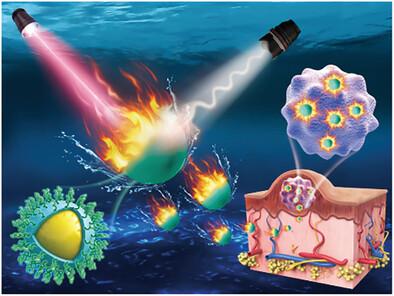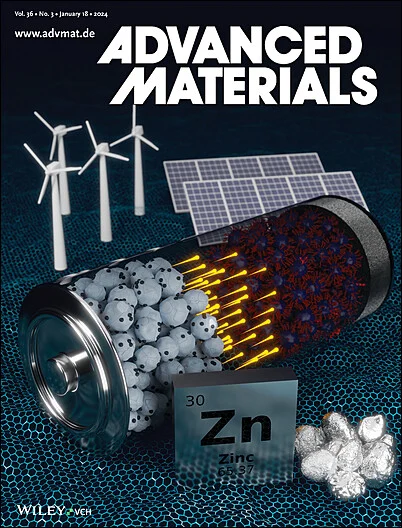NIR-II Fluorescent Thermophoretic Nanomotors for Superficial Tumor Photothermal Therapy
IF 27.4
1区 材料科学
Q1 CHEMISTRY, MULTIDISCIPLINARY
引用次数: 0
Abstract
Peritumoral subcutaneous injection has been highly envisioned as an efficient yet low-risk administration of photothermal agents for superficial tumor photothermal therapy. However, obstructed by complex subcutaneous tissue, the delivery of injected photothermal agents to the specific tumor remains a critical issue. Herein, the study reports a polydopamine (PDA)-encapsulated spherical core/shell nanomotor with fluorescent indocyanine green (ICG) immobilized on its PDA shell. Upon the first near-infrared (NIR-I) irradiation, this motor can generate favorable photothermal heat, and meantime, emit a robust ICG fluorescence in the second near-infrared window (NIR-II). The heat turns the motor into an active photothermal agent able to perform thermophoretic propulsion along the irradiation direction in subcutaneous tissue, while the ICG fluorescence can direct the subcutaneous propulsion of motors toward specific tumor through real-time NIR-II imaging. These functions endow the motor with the ability of moving to tumor after being injected at peritumoral site, enabling an enhanced photothermal therapy (PTT). The results demonstrated herein suggest an integrated nanorobotic tool for the superficial PTT using peritumoral administration, highlighting an NIR-II imaging-directed subcutaneous propulsion.

求助全文
约1分钟内获得全文
求助全文
来源期刊

Advanced Materials
工程技术-材料科学:综合
CiteScore
43.00
自引率
4.10%
发文量
2182
审稿时长
2 months
期刊介绍:
Advanced Materials, one of the world's most prestigious journals and the foundation of the Advanced portfolio, is the home of choice for best-in-class materials science for more than 30 years. Following this fast-growing and interdisciplinary field, we are considering and publishing the most important discoveries on any and all materials from materials scientists, chemists, physicists, engineers as well as health and life scientists and bringing you the latest results and trends in modern materials-related research every week.
文献相关原料
公司名称
产品信息
阿拉丁
sodium hydroxide (NaOH)
阿拉丁
PS nanospheres
阿拉丁
sodium hydroxide (NaOH)
阿拉丁
PS nanospheres
 求助内容:
求助内容: 应助结果提醒方式:
应助结果提醒方式:


